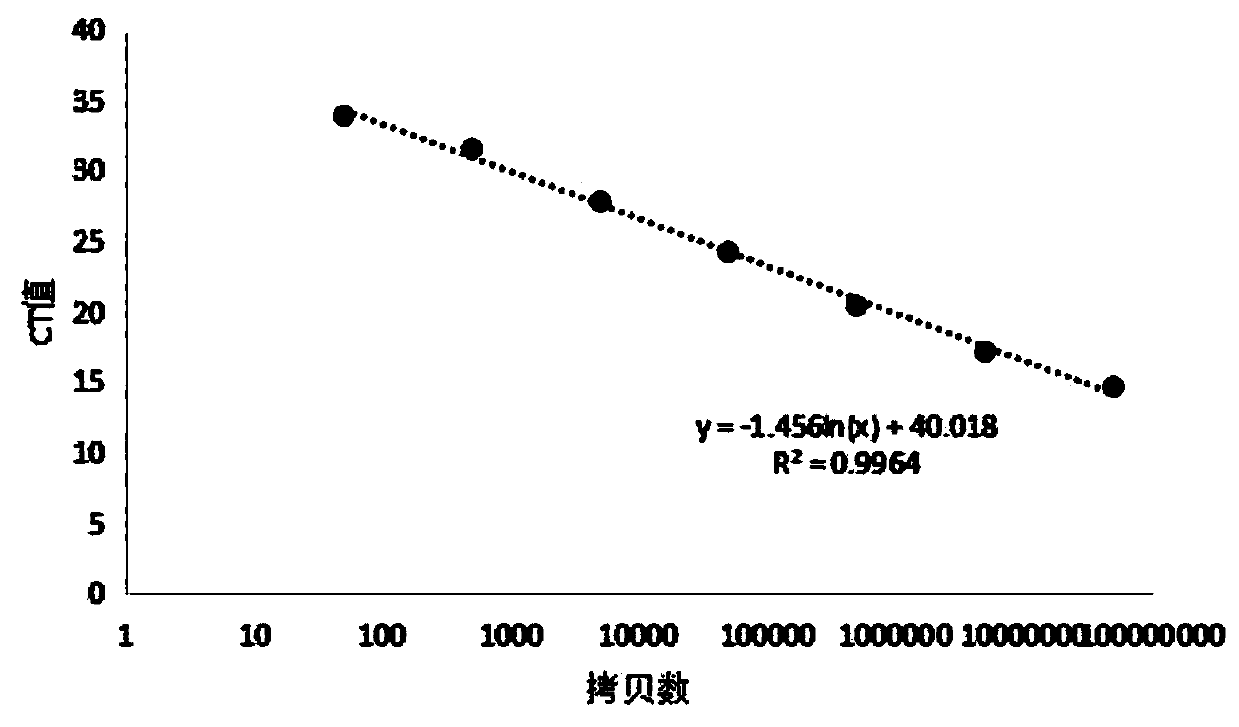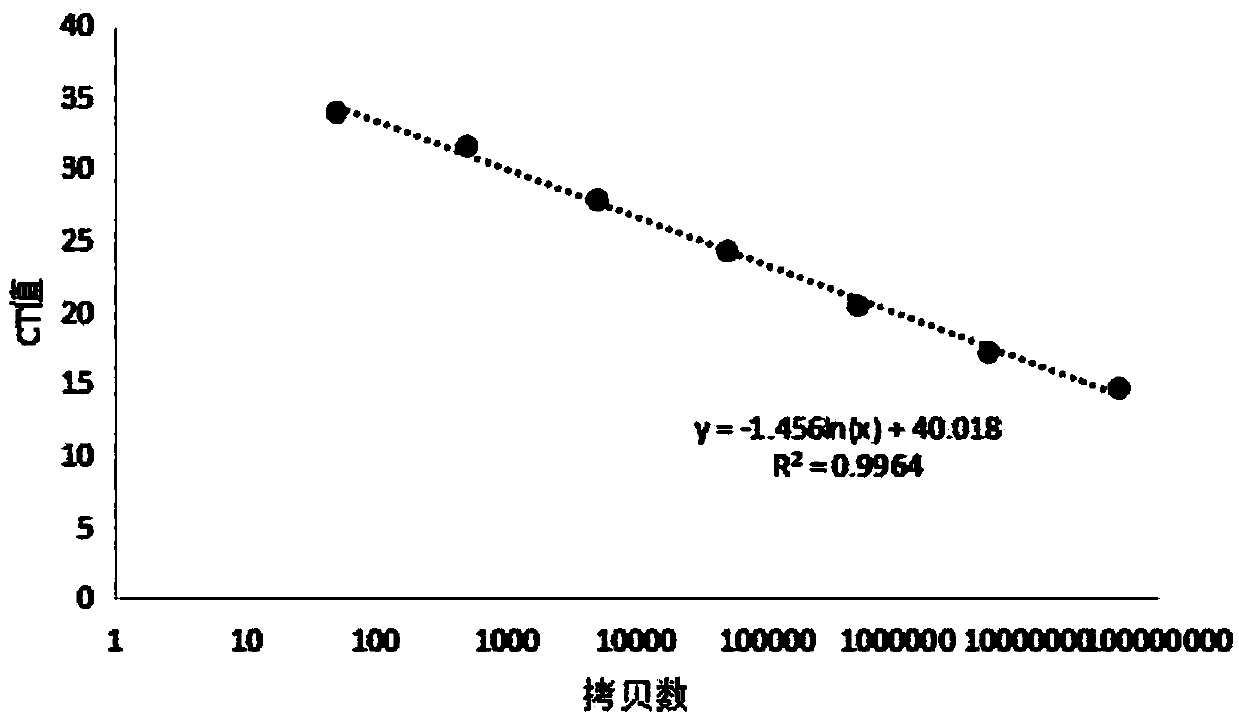Primer pair and kit for rapidly detecting mycoplasma and application of primer pair and kit
A mycoplasma and primer pair technology, which is applied in biochemical equipment and methods, microorganisms, and microorganism-based methods, etc., can solve the problems of long culture time of mycoplasma and affect the therapeutic effect of cells, and achieve the effect of high sensitivity and quantitative detection.
- Summary
- Abstract
- Description
- Claims
- Application Information
AI Technical Summary
Problems solved by technology
Method used
Image
Examples
Embodiment 1
[0043] 1. Preparation of primers and standards
[0044] 1. Forward primer (SEQ ID No.1):
[0045] 5'-GAGCAAACAGGATTAGATACCCTGG-3',
[0046] or
[0047] Forward primer (SEQ ID No.2):
[0048] 5'-GAGCAAATAGGATTAGATACCCTGG-3';
[0049] Reverse primer (SEQ ID No.3):
[0050] 5'-CACCATCTGTCACTCTGTTAACCTCCA-3';
[0051] or
[0052] Reverse primer (SEQ ID No.4):
[0053] 5'-CACCATCTGTCACTCTGTTAACCTCCA-3'.
[0054] The primers were synthesized by Jerry Company, centrifuged at 12000g for 1min, each of the forward and reverse primers was dissolved in water to a concentration of 100μM, 2μl was added to 18μl of water and diluted to 10μM, and the remaining primers were stored at -20°C.
[0055] 2. The standard product is the pUC57 plasmid containing a partial sequence of the 16S rDNA conserved region, synthesized by Jerry Company. The base number of pUC57 is 2710bp. 16S rDNA partially conserved region sequence (SEQ ID No.3), base number 299bp. The standard was dissolved in 1×TEbuf...
Embodiment 2
[0066] Detection of human and mouse cells by QPCR
[0067] Detection of human and murine cells
[0068] Take cryopreserved human immune cells and rat stem cells, wash them with PBS for 3 times, then use Tiangen DNA Extraction Kit (DP304-02) to extract DNA, then take the DNA and use the present invention for detection, the detection method is the same as in Example 1 The results are shown in Table 2.
[0069] Table 2 Test results
[0070] sample concentration CT value tm human gene 61.7ng / μl 37.1 84.2℃ mouse gene 60.75ng / μl 37.6 84.2℃
[0071] It can be drawn from Table 2 that the amplification results of human and mouse genes using the primer pair of the present invention are negative, indicating that they are less affected by cell genes in cell detection.
Embodiment 3
[0073] Using the method of Example 1 to detect human umbilical cord mesenchymal stem cells and supernatant
[0074] After the human umbilical cord mesenchymal stem cells were grown to 80% confluence in the culture dish, 2ml of trypsin was added, digested at room temperature for 3min, and then culture medium was added to terminate the digestion.
[0075] After centrifugation at 100 g for 5 minutes, discard the supernatant, add 5 ml of normal saline, mix and wash three times, and take 100 μl of the added normal saline after centrifugation as test sample 1.
[0076] Add 100 μl of cell suspension to the bottom cells as test sample 2.
[0077] The sample to be tested was placed in a metal bath at 100° C. for 10 minutes, centrifuged at 12,000 g for 5 minutes, and 1 μl was added to the QPCR system in step 2 and step 2 of Example 1.
[0078] The positive control is the standard product diluted 2×10 4 times, the theoretical copy number is 2.5×10 6 , the negative control was water, a...
PUM
 Login to View More
Login to View More Abstract
Description
Claims
Application Information
 Login to View More
Login to View More - R&D
- Intellectual Property
- Life Sciences
- Materials
- Tech Scout
- Unparalleled Data Quality
- Higher Quality Content
- 60% Fewer Hallucinations
Browse by: Latest US Patents, China's latest patents, Technical Efficacy Thesaurus, Application Domain, Technology Topic, Popular Technical Reports.
© 2025 PatSnap. All rights reserved.Legal|Privacy policy|Modern Slavery Act Transparency Statement|Sitemap|About US| Contact US: help@patsnap.com



